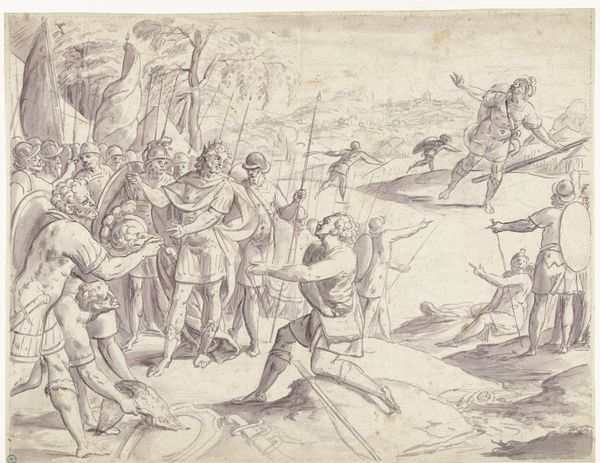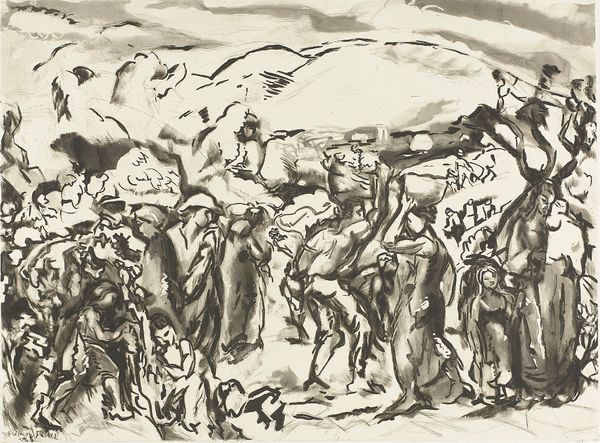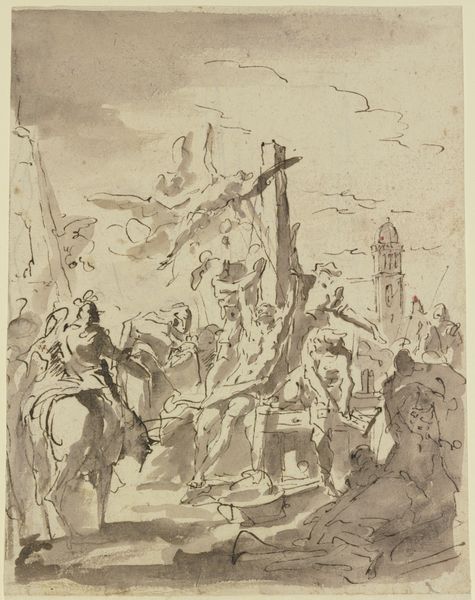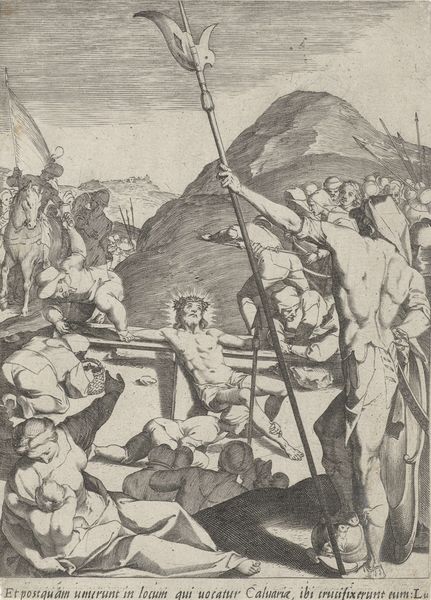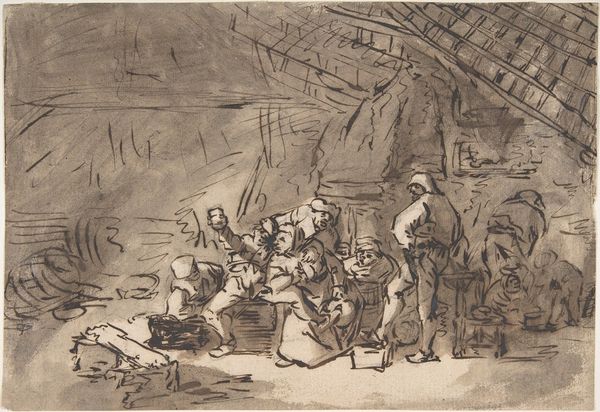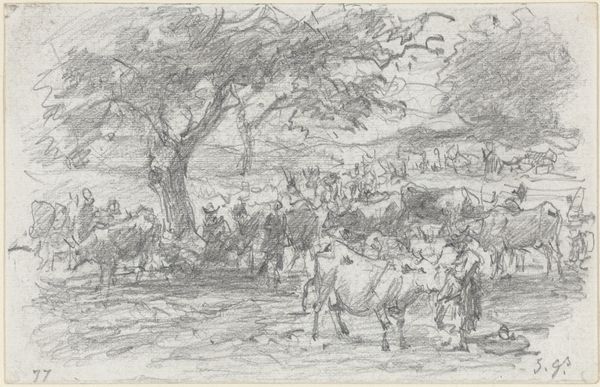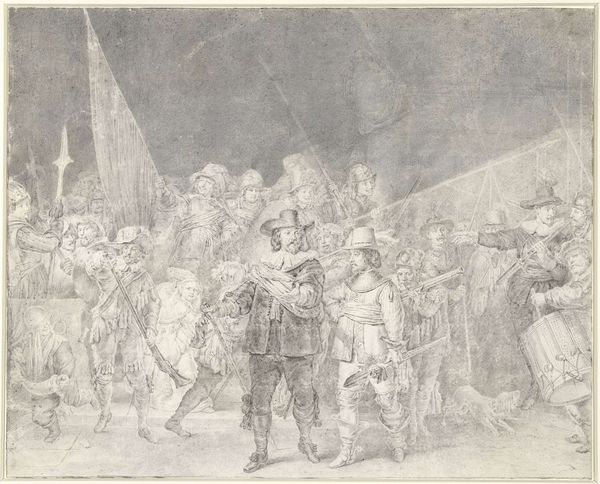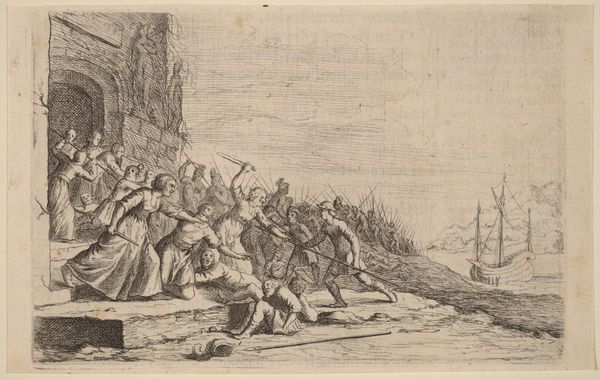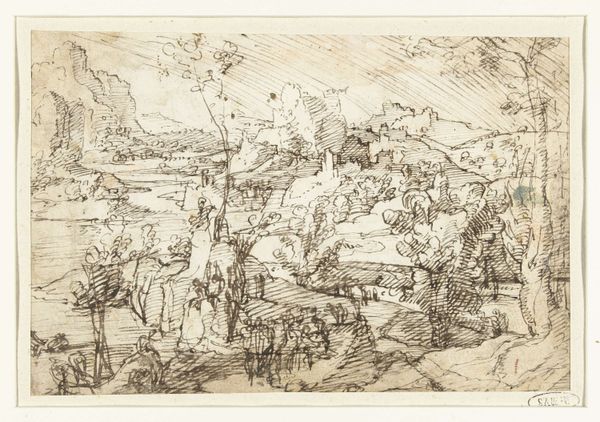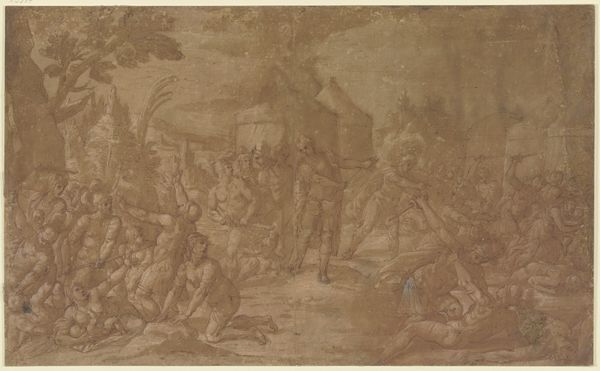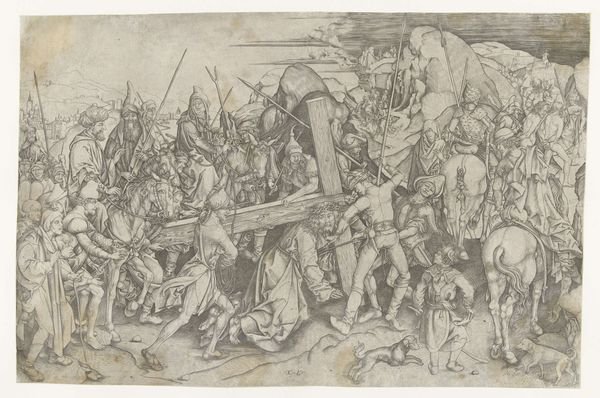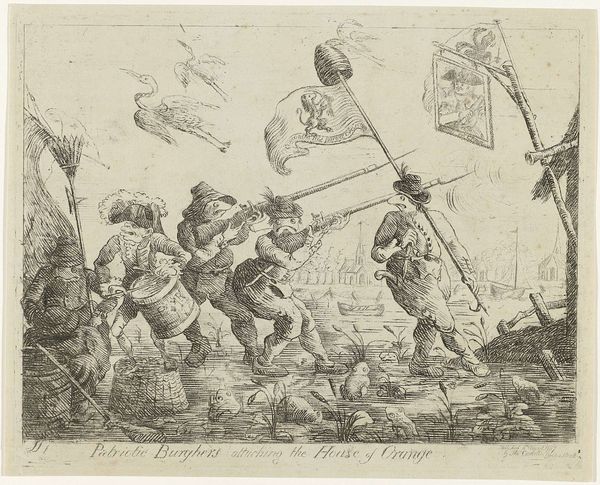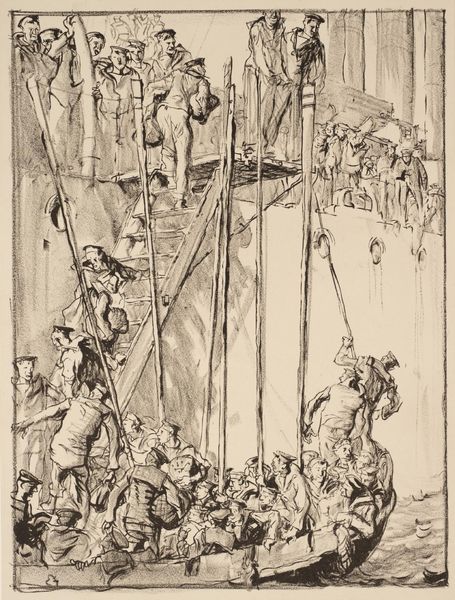
drawing, print, etching, paper, ink, pen
#
drawing
#
narrative-art
# print
#
etching
#
paper
#
ink
#
pen
#
genre-painting
#
history-painting
Dimensions: 125 × 72 mm
Copyright: Public Domain
Curator: Look at this “Battle Scene”, a print and pen drawing with ink on paper by Jan Luyken. It resides here at the Art Institute of Chicago. Editor: Immediately, I feel a sense of chaos and claustrophobia. The lines are frenetic, almost like a thunderstorm, with a strange sense of theatre and tension dominating everything. The drawing pulses with that almost Baroque drama. Curator: Indeed, the downward-sloping rain lines create a sense of oppressive force. It is tempting to think about how imagery reinforces or contests the heroic ideal. War has often been shown in gleaming armor and epic battles, while here the artist depicts exhaustion, and desperation, questioning dominant narratives around power and heroism. Editor: Precisely! It makes me wonder if this isn’t about the so-called 'glory' but instead reveals the deep futility of armed conflict. The figures are not individualized, heroic, not triumphant; rather they’re blended in a sea of anonymous combatants struggling. Even the light is unsettling – an ambiguous gray – perhaps symbolic of moral ambiguity. Curator: Right. Luyken created many narrative scenes during a period of constant European conflict. The printmaking tradition in the Netherlands especially encouraged distribution and public accessibility. One may want to also contextualize this artwork in light of contemporary military conflicts and question what motivates and sustains cycles of violence. Editor: I love the feeling that there’s no 'winning' moment. There is this one prone figure, and his useless musket lying right next to him; it is quite clear it represents a failed encounter. Instead of showing some powerful leader at the top, Luyken is placing ordinary people in a miserable environment right at eye level. It serves as an incredibly powerful statement. Curator: This ‘Battle Scene’ offers an interesting alternative approach. It prompts to reconsidering images in war, perhaps offering an intimate peek behind carefully created imagery. Editor: I see, definitely food for thought here. It also is quite evocative and, personally, makes one contemplate what role images have to shape and reinforce historical understanding.
Comments
No comments
Be the first to comment and join the conversation on the ultimate creative platform.
